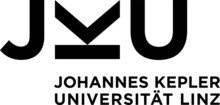05/21/2021
ESQ Faculty member Gregor Weihs and colleagues show that totally destructive interference does not require mutual indistinguishability between all particles
Gregor Weihs, Robert Keil and colleagues of the University of Innsbruck show that totally destructive interference does not require mutual indistinguishability between all but only between symmetrically paired particles, in agreement with recent theoretical predictions.
They investigate, in a four-photon interference experiment in a laser-written waveguide structure, how symmetries control the suppression of many-body output events of a Jx unitary.
Weihs and colleagues demonstrate the symmetry dependence of the many-body suppression effect via the interference of four photons. The photons are generated from a spontaneous parametric down-conversion source in a multimode interferometer, which is implemented with a femtosecond-laser-written waveguide structure in glass. Their results are in agreement with recent theoretical predictions and follow a quantitative simulation of the experiment, taking into account typical systematic errors.
For more information see:
https://presse.uibk.ac.at/News_Detail.aspx?id=134119&menueid=24035&l=deutsch
Symmetry allows for distinguishability in totally destructive many-particle interference. Julian Münzberg, Christoph Dittel, Maxime Lebugle, Andreas Buchleitner, Alexander Szameit, Gregor Weihs, and Robert Keil. PRX Quantum 2021 doi: 10.1103/PRXQuantum.2.020326
Navigation
Contact
ESQ Office
Austrian Academy of Sciences (ÖAW)
Atena Zalbeik-Dormayer
Boltzmanngasse 5
1090 Vienna
office(at)esq-quantum.at






